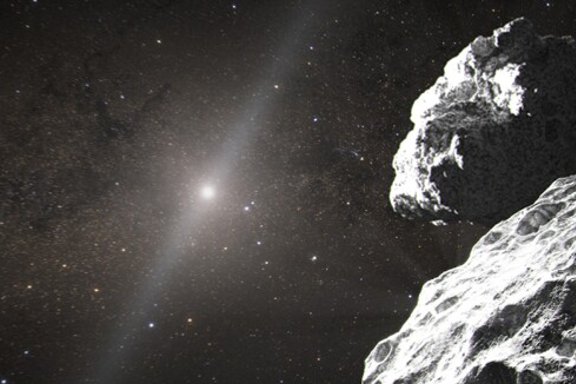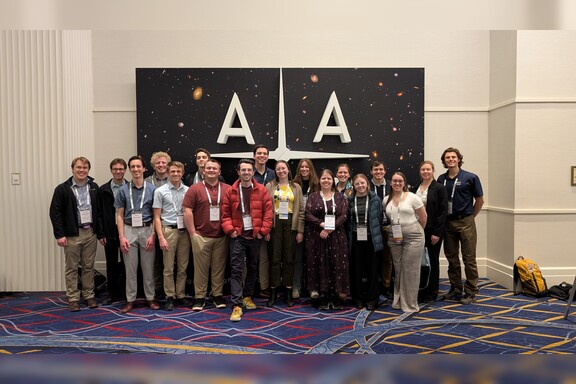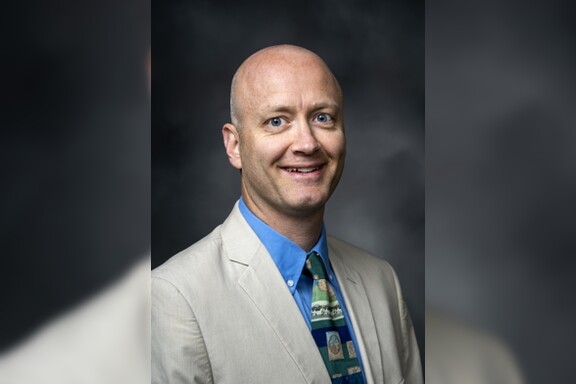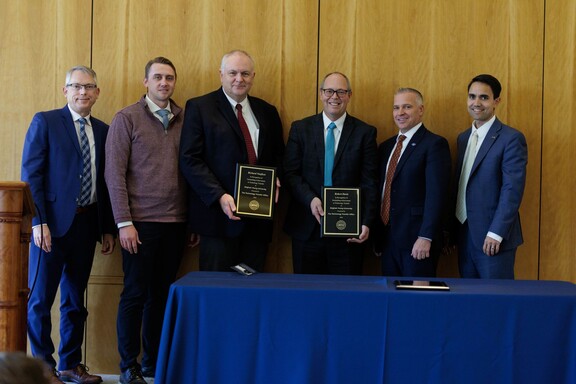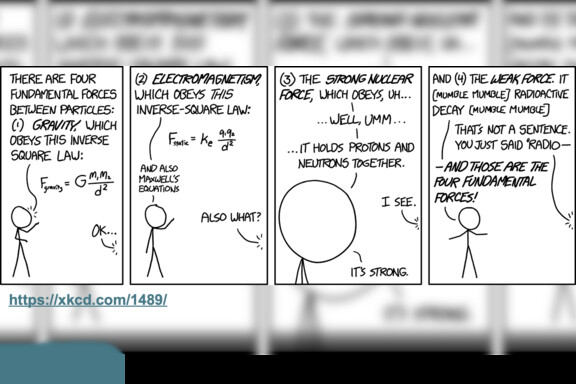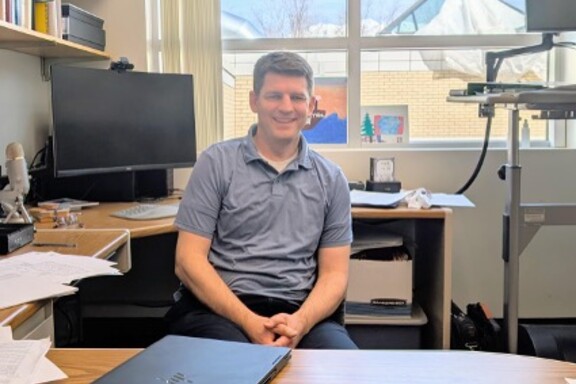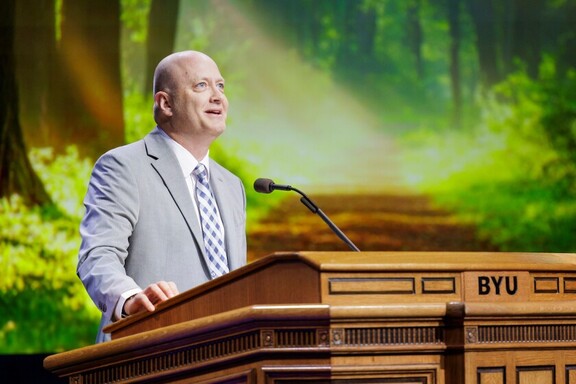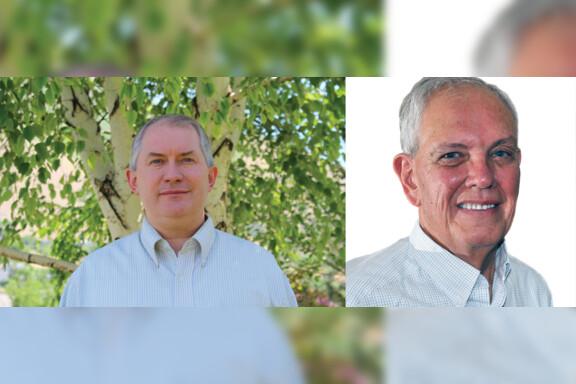Catching up on the Past Five Years
Faculty Retirements
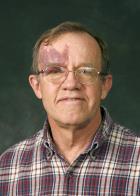 Clark Christensen has been consistently enthusiastic about transferring the broad knowledge of astrophysics and observational techniques that he had learned during his years studying at Caltech to the many students he taught during his time at BYU. One of the memories I have of Dr. Christensen is that he always seemed able to make time to work on difficult problems or have long discussions with his students about their progress. As Mike Joner said, “Looking back, I've always been happy that Clark was the professor for my first real astrophysics class at BYU.”
Clark Christensen has been consistently enthusiastic about transferring the broad knowledge of astrophysics and observational techniques that he had learned during his years studying at Caltech to the many students he taught during his time at BYU. One of the memories I have of Dr. Christensen is that he always seemed able to make time to work on difficult problems or have long discussions with his students about their progress. As Mike Joner said, “Looking back, I've always been happy that Clark was the professor for my first real astrophysics class at BYU.”
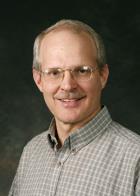 Bret Hess was notably dedicated to improving the student experience during his years at BYU. The Society of Physics students thrived when he was the chapter advisor. Many of our current practices in undergraduate physics and astronomy education at BYU were influenced by the work he did when he chaired the Undergraduate Committee. Bret established a senior survey and addressed student concerns about the lack of advising by instituting the current undergraduate advising process. He also published many articles and guided many students through dissertations and theses on experimental and computational condensed- matter physics.
Bret Hess was notably dedicated to improving the student experience during his years at BYU. The Society of Physics students thrived when he was the chapter advisor. Many of our current practices in undergraduate physics and astronomy education at BYU were influenced by the work he did when he chaired the Undergraduate Committee. Bret established a senior survey and addressed student concerns about the lack of advising by instituting the current undergraduate advising process. He also published many articles and guided many students through dissertations and theses on experimental and computational condensed- matter physics.
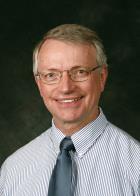 Ross Spencer is an amazing teacher and master computational physicist. The masterful job he did with each class he taught set a very high bar for all of his colleagues. It wasn't that he mastered a lot of tricks about teaching; he just naturally did a wonderful job. This was also true of his research and Department leadership. He understood the theory so well, he made it look easy. He understood how to effectively lead the department so well, a lot of potential problems never showed up. Ross was also a talented computational physicist. He could take a very nasty problem and write code that overcame significant numerical obstacles. His research on plasmas spanned both physics and chemistry. Ross has been a great support to his experimental colleagues by providing guidance on where to look for interesting results and deriving results that would help interpret the data. He shared his computational expertise with the students as the originator of the department’s computational physics lab sequence, turning a three-credit hour computational course he had developed into the current lab format, which offered students more help. Students are still learning from his computational physics examples.
Ross Spencer is an amazing teacher and master computational physicist. The masterful job he did with each class he taught set a very high bar for all of his colleagues. It wasn't that he mastered a lot of tricks about teaching; he just naturally did a wonderful job. This was also true of his research and Department leadership. He understood the theory so well, he made it look easy. He understood how to effectively lead the department so well, a lot of potential problems never showed up. Ross was also a talented computational physicist. He could take a very nasty problem and write code that overcame significant numerical obstacles. His research on plasmas spanned both physics and chemistry. Ross has been a great support to his experimental colleagues by providing guidance on where to look for interesting results and deriving results that would help interpret the data. He shared his computational expertise with the students as the originator of the department’s computational physics lab sequence, turning a three-credit hour computational course he had developed into the current lab format, which offered students more help. Students are still learning from his computational physics examples.
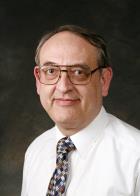 Larry Rees, though quiet and unassuming, is the ultimate team player. Many in the BYU Departments of Physics & Astronomy and of Chemistry & Biochemistry owe their success to having the opportunity to collaborate with Larry. His research in nuclear physics spanned decades and most recently included work on portable neutron detectors to aid in national security. He was a dedicated mentor, who consistently reached out to the students who struggled. He was also a very innovative teacher who enjoyed exploring new ways to teach physics. Some of his ideas for teaching E&M are revolutionary. His focus has always been on helping the students learn.
Larry Rees, though quiet and unassuming, is the ultimate team player. Many in the BYU Departments of Physics & Astronomy and of Chemistry & Biochemistry owe their success to having the opportunity to collaborate with Larry. His research in nuclear physics spanned decades and most recently included work on portable neutron detectors to aid in national security. He was a dedicated mentor, who consistently reached out to the students who struggled. He was also a very innovative teacher who enjoyed exploring new ways to teach physics. Some of his ideas for teaching E&M are revolutionary. His focus has always been on helping the students learn.
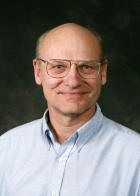 Brian Peterson was the hero of the department in our early electronics and computer days. Before we had a computer staff member, Brian was the go-to guy to make sure everything worked, and he did a great job at it, even occasionally finding an existing hole in the wall right where it needed to be to run a cable. He was very devoted to teaching experimental techniques and skills to our students. He also developed a lot of the electronics behind our labs and helped a lot with infrastructure. In the last few years before he retired, he put a lot of effort into refining Physics 240 and taught all the sections of Physics 240, which took an incredible amount of time and dedication. Brian was also an exceptional experimentalist, finding ways around the equipment challenges, and figuring out where the noise sources were, besides being able to fix any computer problems that turned up. He taught the meteorology class for years and was, until recently, the caretaker of the ESC weather station and its display in the lobby of the ESC.
Brian Peterson was the hero of the department in our early electronics and computer days. Before we had a computer staff member, Brian was the go-to guy to make sure everything worked, and he did a great job at it, even occasionally finding an existing hole in the wall right where it needed to be to run a cable. He was very devoted to teaching experimental techniques and skills to our students. He also developed a lot of the electronics behind our labs and helped a lot with infrastructure. In the last few years before he retired, he put a lot of effort into refining Physics 240 and taught all the sections of Physics 240, which took an incredible amount of time and dedication. Brian was also an exceptional experimentalist, finding ways around the equipment challenges, and figuring out where the noise sources were, besides being able to fix any computer problems that turned up. He taught the meteorology class for years and was, until recently, the caretaker of the ESC weather station and its display in the lobby of the ESC.
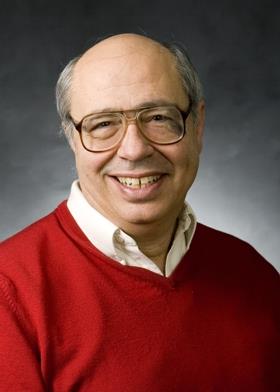 Manuel Berrondo joined the faculty in P&A at BYU in 1988 after considerable academic experience in such diverse countries as Sweden, France, the UK, Israel, Mexico, and the US. At BYU, Manuel taught a wide spectrum of undergraduate and graduate classes and mentored undergraduate students in the very diverse areas of physics that interest him and in which he has published significant contributions. From classical mechanics and mathematical physics to quantum electrodynamics and quantum chemistry; from modeling subatomic particles to the modeling of the flocking of birds, Manuel is a master at analytic and numerical techniques. Many colleagues at BYU and beyond have benefited from his willingness to share his skills and his profound understanding of the diverse subfields of physics and how they connect. His students have appreciated his kindness, his sense of humor, and his very personal way to develop the material beyond the textbook recipes. In addition to having a passion for physics, Manuel is a great cook and a lover of opera and classical music in general.
Manuel Berrondo joined the faculty in P&A at BYU in 1988 after considerable academic experience in such diverse countries as Sweden, France, the UK, Israel, Mexico, and the US. At BYU, Manuel taught a wide spectrum of undergraduate and graduate classes and mentored undergraduate students in the very diverse areas of physics that interest him and in which he has published significant contributions. From classical mechanics and mathematical physics to quantum electrodynamics and quantum chemistry; from modeling subatomic particles to the modeling of the flocking of birds, Manuel is a master at analytic and numerical techniques. Many colleagues at BYU and beyond have benefited from his willingness to share his skills and his profound understanding of the diverse subfields of physics and how they connect. His students have appreciated his kindness, his sense of humor, and his very personal way to develop the material beyond the textbook recipes. In addition to having a passion for physics, Manuel is a great cook and a lover of opera and classical music in general.
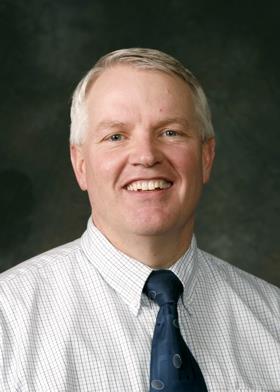 J. Ward Moody seemed to always be filling the years he spent at BYU with interesting and ambitious projects. Early on at BYU, J. Ward was the faculty advisor for the GoldHelox x-ray satellite project. He added to his early success with the establishment of the Robotic Observatory for Variable Object Research (ROVOR), leading the efforts to enlarge and substantially upgrade the campus planetarium, being the lead author for the 1st edition of the Physical Science Foundations textbook, serving many years as the managing editor for the Astronomical Society of the Pacific Conference Series, and being the PI for the NSF PREST grant that allowed for the modernization of the West Mountain Observatory. J. Ward is a dedicated educator who received both an Alcuin Award and a Karl G. Maeser General Education Professorship in recognition of his accomplishments in furthering general education.
J. Ward Moody seemed to always be filling the years he spent at BYU with interesting and ambitious projects. Early on at BYU, J. Ward was the faculty advisor for the GoldHelox x-ray satellite project. He added to his early success with the establishment of the Robotic Observatory for Variable Object Research (ROVOR), leading the efforts to enlarge and substantially upgrade the campus planetarium, being the lead author for the 1st edition of the Physical Science Foundations textbook, serving many years as the managing editor for the Astronomical Society of the Pacific Conference Series, and being the PI for the NSF PREST grant that allowed for the modernization of the West Mountain Observatory. J. Ward is a dedicated educator who received both an Alcuin Award and a Karl G. Maeser General Education Professorship in recognition of his accomplishments in furthering general education.
Staff Retirements
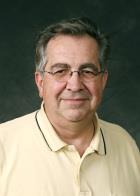 Freeman Andersen, Student laboratory support worked for the department in two capacities over the years. First, he worked as the Demo Area Coordinator (preceding Wayne Peterson in that job) and later returned as our Laboratory Coordinator. Freeman styled himself as a professional toy maker. He loved to find new ways to demonstrate scientific principles in an interesting and cost-effective way. He spent many years keeping all of our instructional laboratory equipment in operating condition, in spite of the best efforts of the students and professors to break it. He also developed many different lab ideas and implemented them in our classes. His cheerful can-do tinkering and careful lab support contributed to an excellent laboratory experience. He managed to maintain a working stockroom of equipment in spite of the inevitable wear and tear of student (and faculty) use. He was also responsible for developing and maintaining most of the interactive displays in our lobby.,
Freeman Andersen, Student laboratory support worked for the department in two capacities over the years. First, he worked as the Demo Area Coordinator (preceding Wayne Peterson in that job) and later returned as our Laboratory Coordinator. Freeman styled himself as a professional toy maker. He loved to find new ways to demonstrate scientific principles in an interesting and cost-effective way. He spent many years keeping all of our instructional laboratory equipment in operating condition, in spite of the best efforts of the students and professors to break it. He also developed many different lab ideas and implemented them in our classes. His cheerful can-do tinkering and careful lab support contributed to an excellent laboratory experience. He managed to maintain a working stockroom of equipment in spite of the inevitable wear and tear of student (and faculty) use. He was also responsible for developing and maintaining most of the interactive displays in our lobby.,
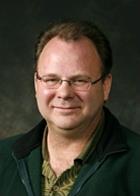 Mark Erickson, Computer Support Representative, kept computer systems running in a time of great change in the computing world as a whole and in our department specifically. The number computers and operating systems he was responsible for increased greatly during the time he served us. As the scope and complexity of computing increased, Mark managed the delicate balance between providing faculty and staff the resources they needed to make progress and keeping the department out of trouble with the university. He and his small army of undergraduate CSRs maintained the increasingly important network resources, enabling a wide range of department services. We greatly appreciate all the time and effort he put in keeping us connected and running.
Mark Erickson, Computer Support Representative, kept computer systems running in a time of great change in the computing world as a whole and in our department specifically. The number computers and operating systems he was responsible for increased greatly during the time he served us. As the scope and complexity of computing increased, Mark managed the delicate balance between providing faculty and staff the resources they needed to make progress and keeping the department out of trouble with the university. He and his small army of undergraduate CSRs maintained the increasingly important network resources, enabling a wide range of department services. We greatly appreciate all the time and effort he put in keeping us connected and running.
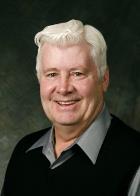 Scott Daniel, Electronics Shop Supervisor, kept equipment up and running for many years. He had a way of knowing how to repair “vintage” systems that benefitted many research groups in the department. He also shared his enthusiasm about science with many young people by giving tours of the labs and acoustics chambers to numerous scout groups and was always ready for a liquid nitrogen ice cream party. Scott always felt that he had 35+ bosses in the department and worked to provide the electronic support they needed.
Scott Daniel, Electronics Shop Supervisor, kept equipment up and running for many years. He had a way of knowing how to repair “vintage” systems that benefitted many research groups in the department. He also shared his enthusiasm about science with many young people by giving tours of the labs and acoustics chambers to numerous scout groups and was always ready for a liquid nitrogen ice cream party. Scott always felt that he had 35+ bosses in the department and worked to provide the electronic support they needed.
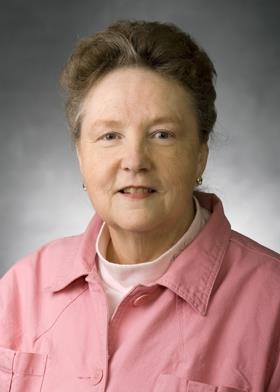 Nan Ellen Ah You, Department Business Manager, made the Department of Physics & Astronomy feel like family for faculty, staff, and students. She was no-nonsense, “tell it like it is,” and, best of all, full of love. None of us can forget the countless hours she spent organizing and coordinating department events and activities, which made us the envy of the entire university. Nan Ellen is also remembered for her heroic efforts to stretch our budgets, her legendary giraffe preserve (office), her stash of Diet Coke, and her care for each of us. Her efforts brought members of the department together, helped us navigate the rules, and made us all look like we knew what we were doing with our budgets. Amazingly, she made each of us feel like we were her favorite.
Nan Ellen Ah You, Department Business Manager, made the Department of Physics & Astronomy feel like family for faculty, staff, and students. She was no-nonsense, “tell it like it is,” and, best of all, full of love. None of us can forget the countless hours she spent organizing and coordinating department events and activities, which made us the envy of the entire university. Nan Ellen is also remembered for her heroic efforts to stretch our budgets, her legendary giraffe preserve (office), her stash of Diet Coke, and her care for each of us. Her efforts brought members of the department together, helped us navigate the rules, and made us all look like we knew what we were doing with our budgets. Amazingly, she made each of us feel like we were her favorite.
Faculty New Hires
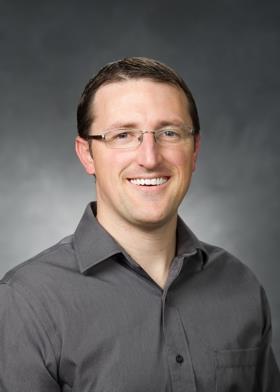 Nathan Powers, Ph.D. in Physics, University of Nebraska-Lincoln, 2014
Nathan Powers, Ph.D. in Physics, University of Nebraska-Lincoln, 2014
Specialty: Educational development of physics laboratory classes.
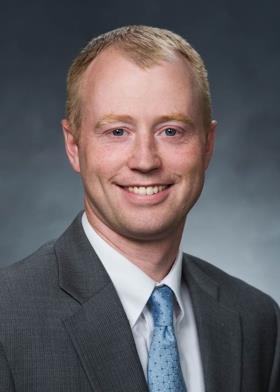
Brian Anderson, Ph.D. in Acoustics, The Pennsylvania State University, 2006 Research
Specialty: Time reversal acoustics for ultrasonic, nondestructive testing, and focusing of sound in rooms. Research on electro-acoustic transduction and arrays in elastic and fluid media.
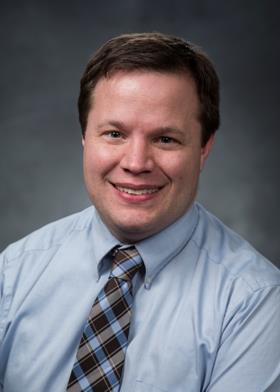
Darin Ragozzine, Ph.D. in Planetary Science, California Institute of Technology, 2009
Research Specialty: Planetary Science, Astrophysics, Exoplanets, Astrostatistics
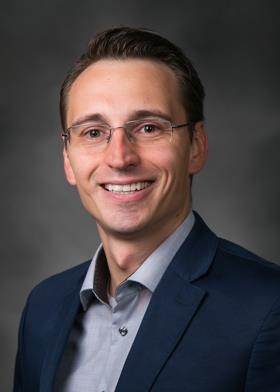 Dennis Della Corte, Dr.rer.nat., Forschungszentrum Jülich, Germany, 2015
Dennis Della Corte, Dr.rer.nat., Forschungszentrum Jülich, Germany, 2015
Research Specialty: Application of physical models and machine learning to solve important problems in computational biology. Highly interdisciplinary projects with direct ties into biotech and Pharma industry.
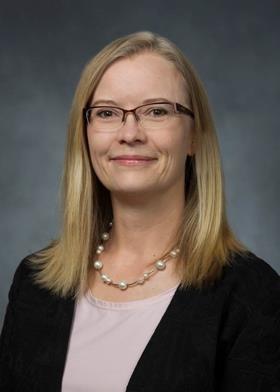 Tracianne Neilsen, Ph.D. in Physics, University of Texas at Austin, 2000
Tracianne Neilsen, Ph.D. in Physics, University of Texas at Austin, 2000
Research Specialty: underwater acoustics, acoustic source localization, inverse methods, machine learning applications in underwater acoustics for seabed characterization.
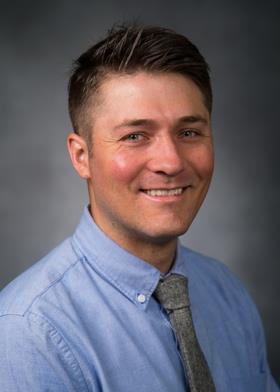 Benjamin Frandsen, Ph.D. in Condensed Matter Physics, Columbia University, 2016
Benjamin Frandsen, Ph.D. in Condensed Matter Physics, Columbia University, 2016
Research Specialty: Condensed Matter Physics--Local structure investigations of superconductors, quantum magnets, strongly correlated electron systems, energy-relevant materials, and functional materials using particle beams of x-rays, neutrons, and muons at large-scale accelerator facilities.
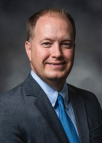 Richard Sandberg, Ph.D. in Physics, University of Colorado at Boulder and JILA, 2009
Richard Sandberg, Ph.D. in Physics, University of Colorado at Boulder and JILA, 2009
Research Specialty: Optical and x-ray coherent lens-less imaging and scattering of materials at the nanoscale using ultrafast lasers, large scale (synchrotron, XFEL) and tabletop x-ray sources.
Staff New Hires
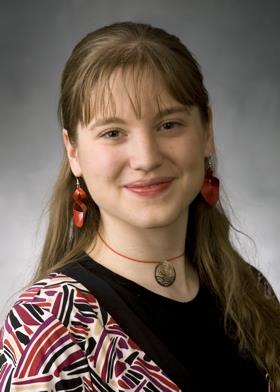 Shelena Shamo, Business Manager
Shelena Shamo, Business Manager
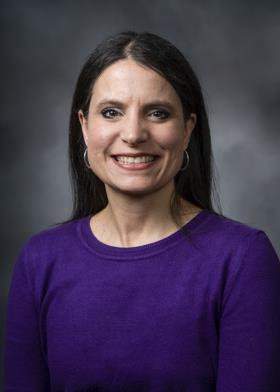 Heather Schuldt, Department Secretary
Heather Schuldt, Department Secretary
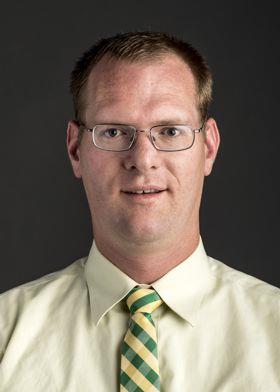 Daniel Zacharias, Computer Service Desk Manager/Systems Engineer
Daniel Zacharias, Computer Service Desk Manager/Systems Engineer
News and Events
